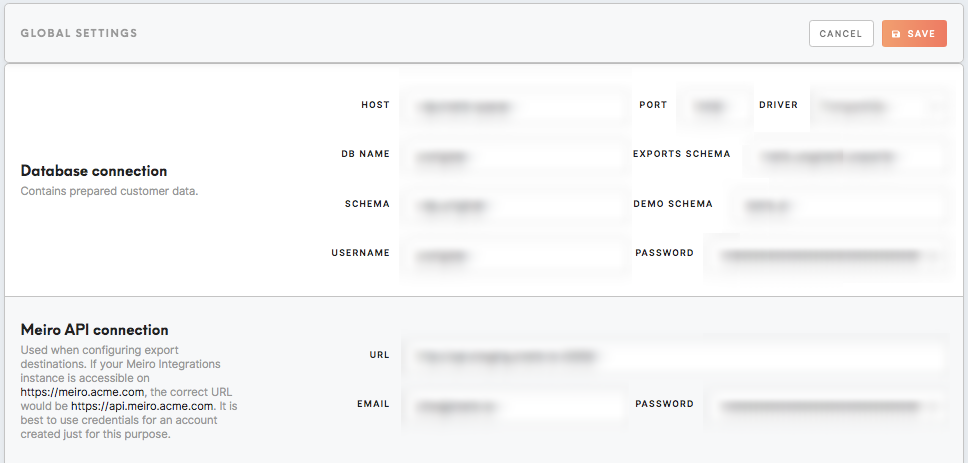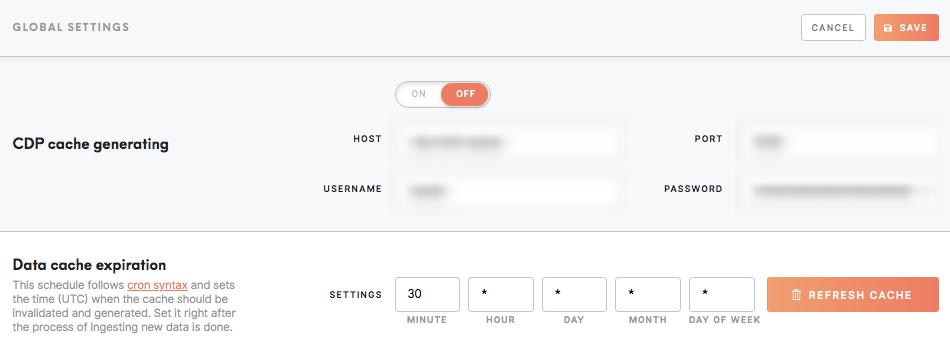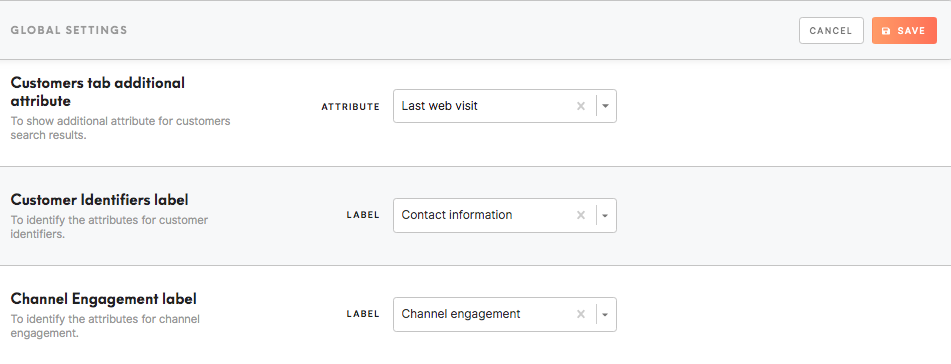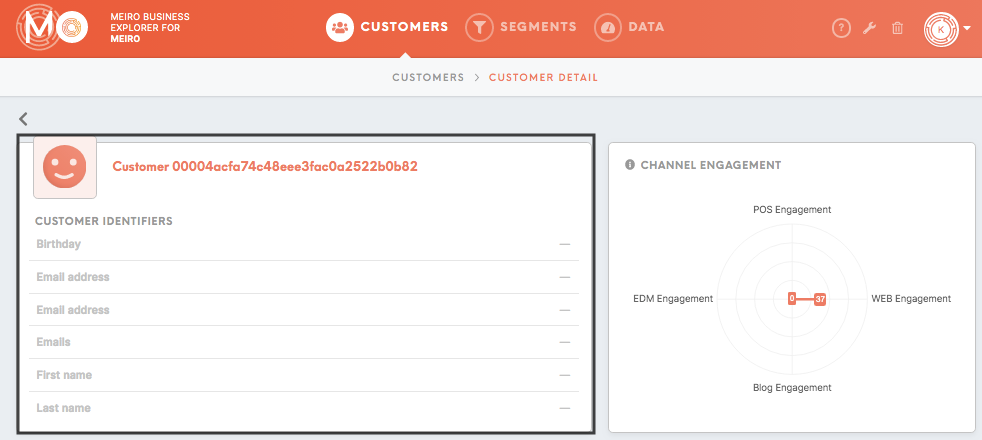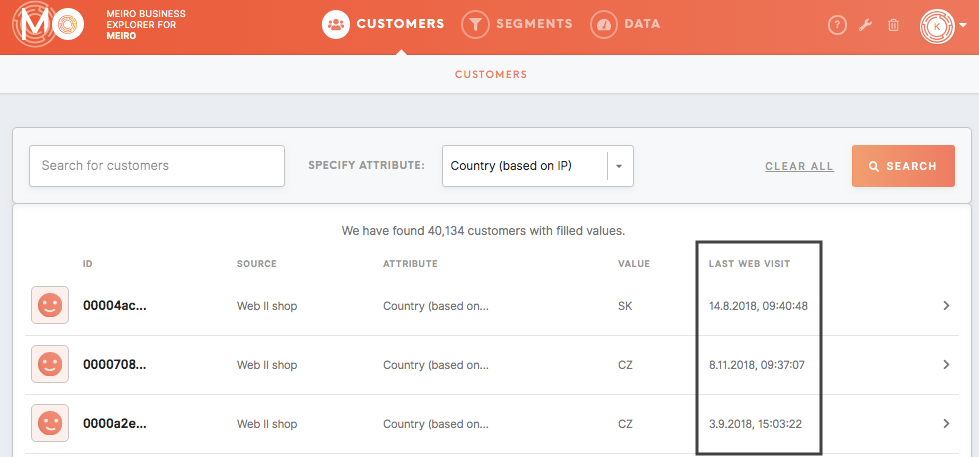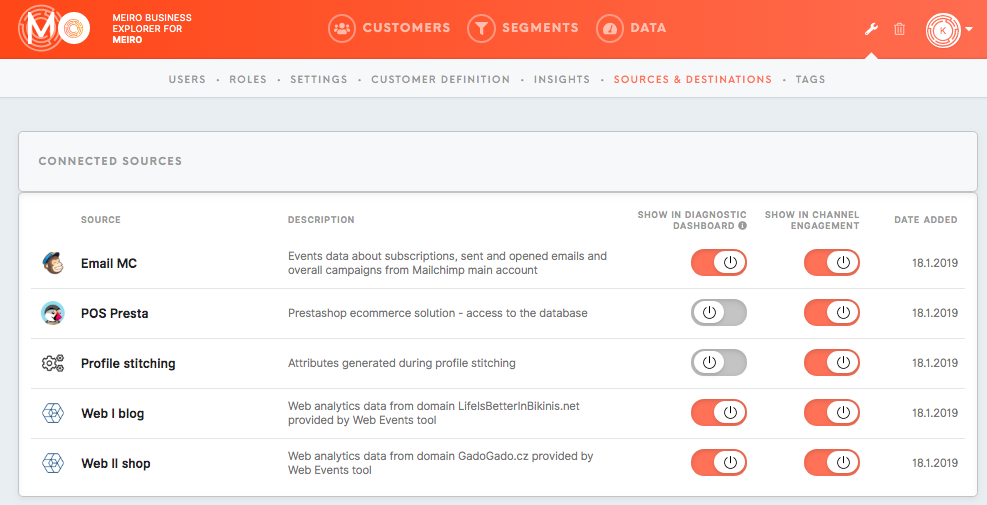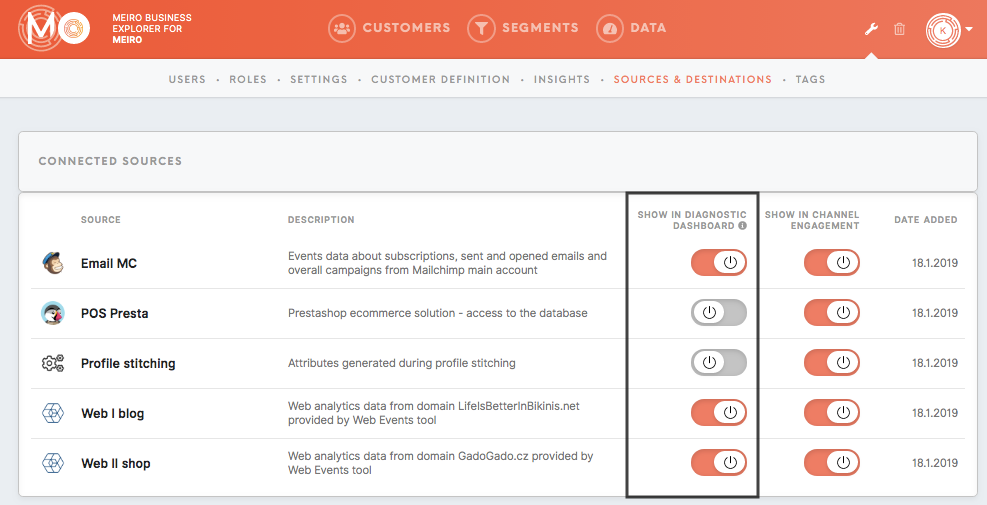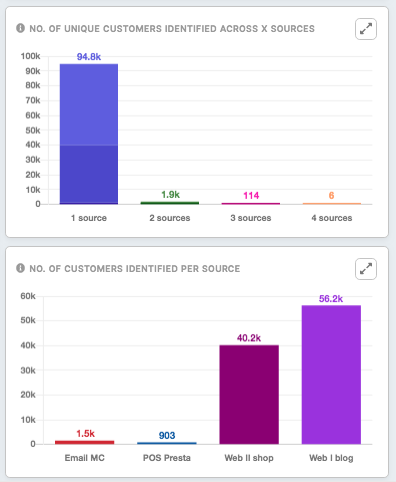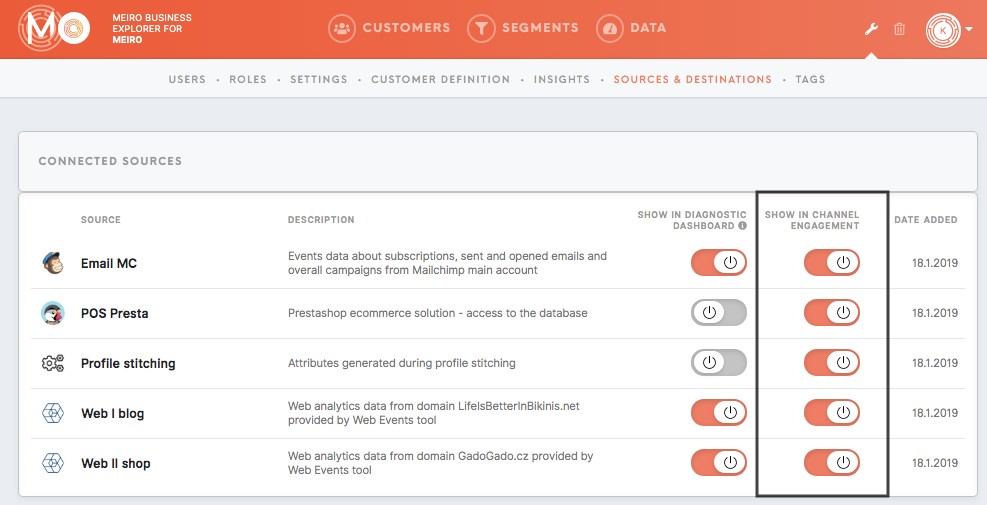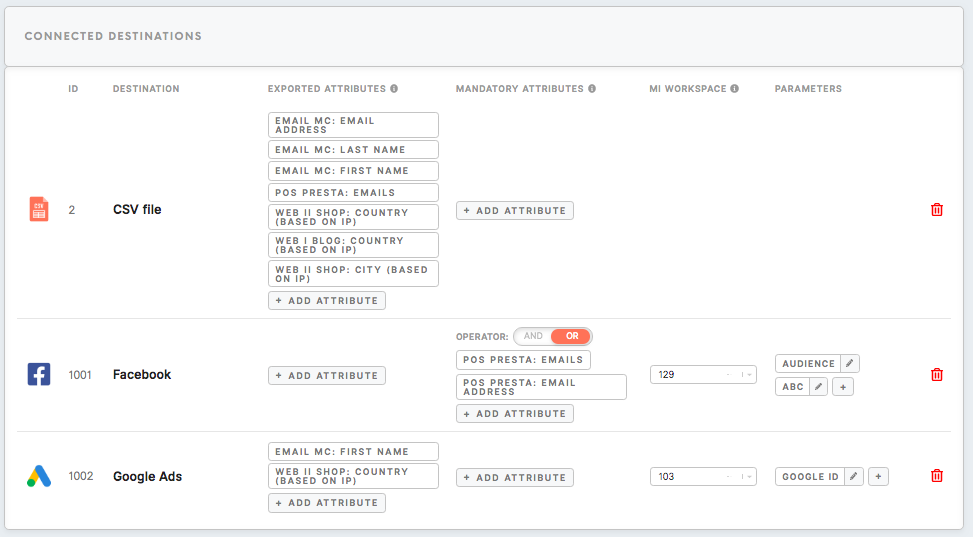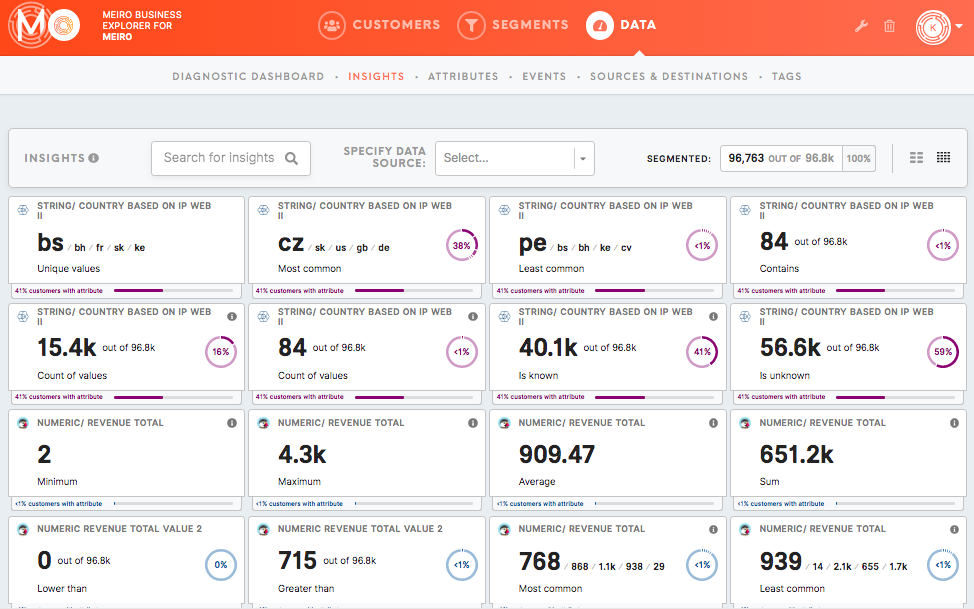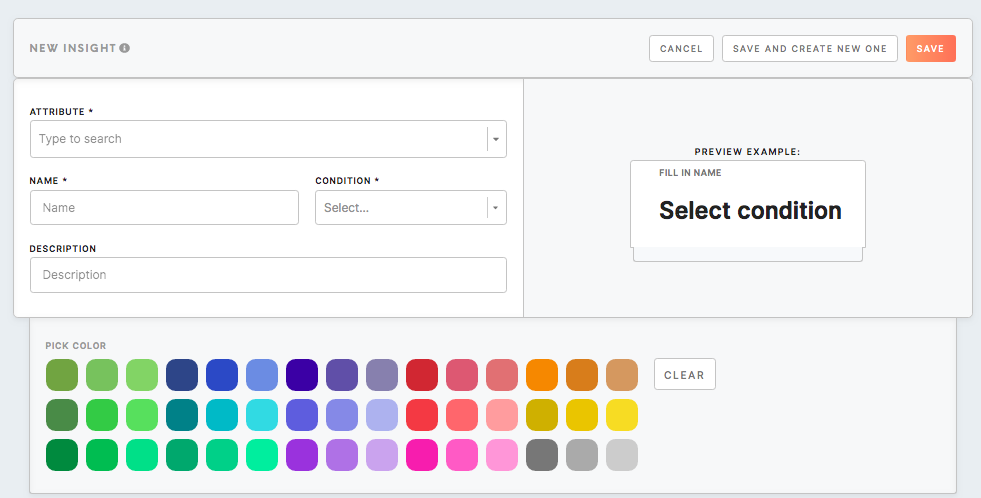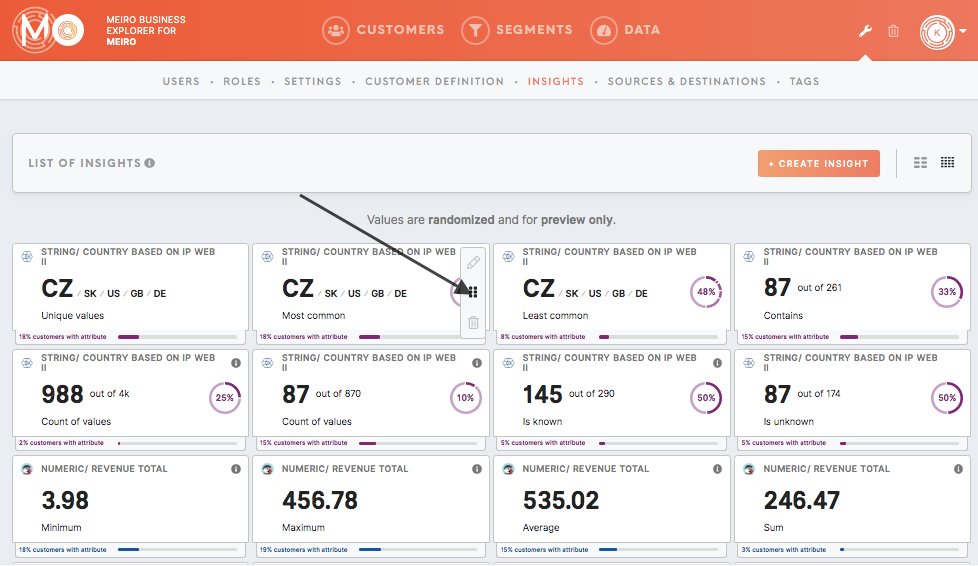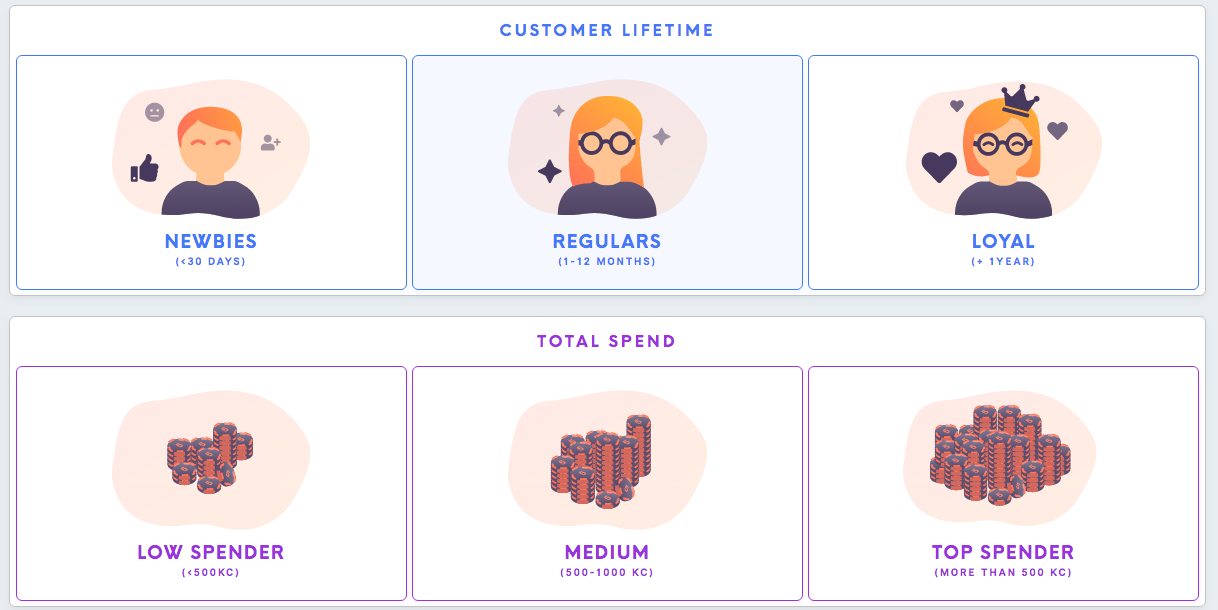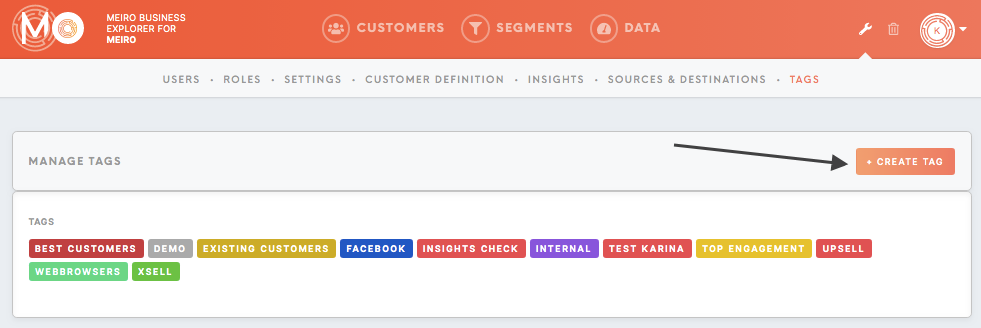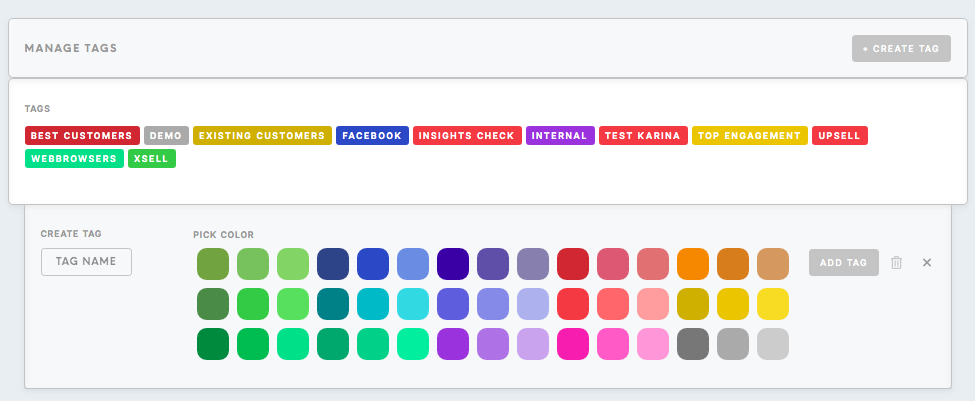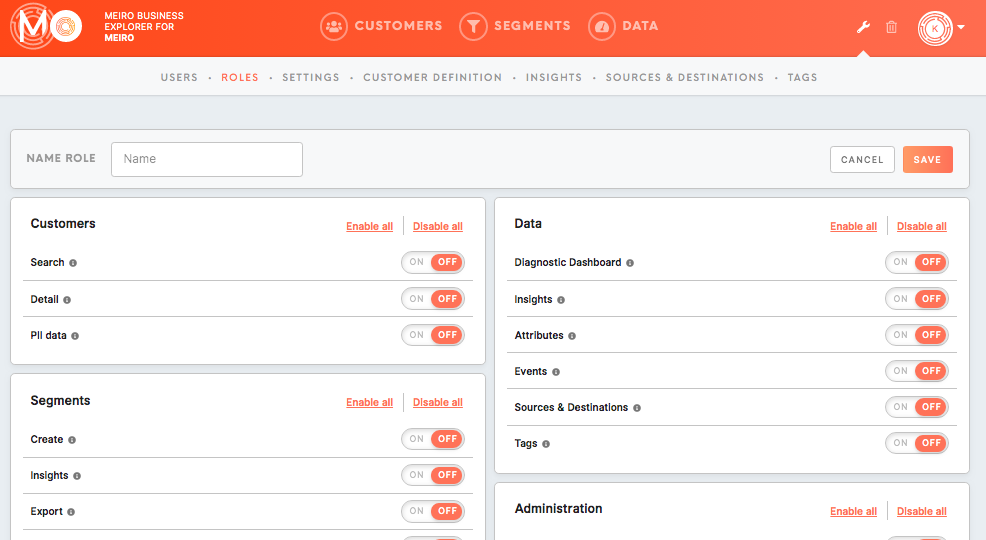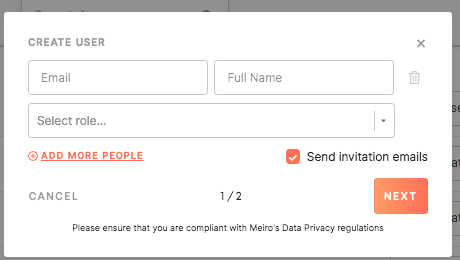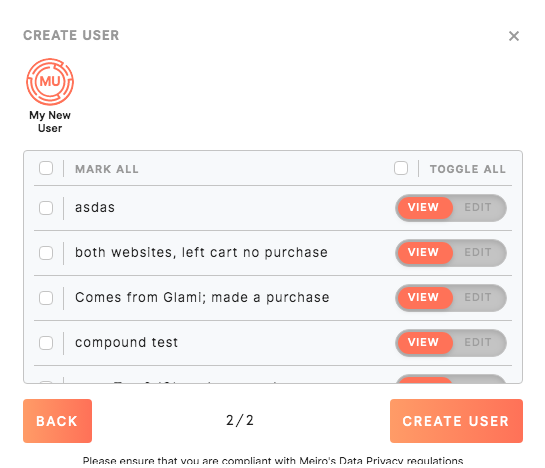Administrator's first steps
As an administrator, you have access to the Administration tab where you can manage most of the features. It is also possible to have access to some areas of the Administration tab granted within your user role (read about user roles here).
To learn about the Administration tab and its full description please refer to this article.
1. Let’s get started with the Administration tab
1.1 Global settings: database and API connection
Remember to save your changes in the Global settings tab, you need to click on the Save button.
If you are not sure what values you should enter, please contact Meiro team.
1.2 Data cache
Set Data cache expiration and CDP cache generating (here you can refresh cache manually whenever you need to).
1.3 Maintenance notification email
Set maintenance email where all the alerts will be sent.
1.4 PII protection
Enable/ disable PII data. Attributes with label set under PII protection section will be hidden from users with no rights to see PII data.
To learn about user roles and how to hide PII data from users on user role level, please refer to this article.
2. Attributes global settings
In the lower section of Global settings, you can set labels for a certain areas on Meiro Business Explorer. You can pick the right label and click on the Save button to save the changes.
2.1 Label for the Channel Engagement
Set Channel Engagement attributes that will be visible in the Channel Engagement of your customer profiles.
2.2 Label for Customer Identifiers
Set Customer Identifiers attributes that will be displayed in the Customer Identifier section of your customer profiles.
2.3 Label for the Customers tab
Set additional attributes within the Customers tab that will be displayed for your search results.
Make sure to save changes in the Global Settings tab and click on the Save button.
3. Customer definition
Go to the Customer Definition tab and make sure customer definition is correctly set and set up mandatory attributes if you wish to.
It is an optional feature. You do not have to set mandatory attributes for your customer definition if you do not wish to.
The update will be visible after the next data cache refresh or manual data cache refresh that can be activated in the Global Settings tab (point 1.1 above).
4. Data sources & destinations
Go to the Source & Destination tab and check if all the sources and destinations for your data are set.
4.1 Data sources: Diagnostic Dashboard
Mark sources you wish to see in the Diagnostic Dashboard NO. OF UNIQUE CUSTOMERS IDENTIFIED ACROSS X SOURCES and NO. OF CUSTOMERS IDENTIFIED PER SOURCE
The update will be visible after the next data cache refresh or manual data cache refresh that can be activated in the Global Settings tab (point 1.1 above).
4.2 Data sources: Channel Engagement
Mark sources for the Channel Engagement if your customer profiles.
4.3 Data destinations
Set exported and mandatory attributes for your destinations, as well as parameters.
Exported attributes are attributes that will be exported to your chosen destination. This is a mandatory field. If not filled your export will be empty.
Mandatory attributes are attributes that must be present in order to export to your chosen destination. This is an optional field and can be present if you wish to limit your exports.
Parameters can be set for some destinations to further precise your export to a particular audience.
5. Insights
Insights are visible for each segment under the Insights tab, as well as the Data tab for all your customers' database.
To set up insights, please go to the Administration tab/ Insights tab, click on the Create Insights button.
Then set:
-The attribute you wish to display in the insights.
-Precise the condition for your attributes.
-Name your insight.
-Add a description if needed, it will be visible on hove under "i".
-Choose the colour.
Click on the Save button and save changes.
Insights can be drag and drop to the right position.
To learn about insights and their meaning, please refer to this article.
6. Smart Segments
Smart segments will be visible for all your users. They will be able to copy segments and work with it further. This is a quick way how to introduce your team to your customers' database.
You can set up smart segments under the Segments/ Smart Segments tab.
To learn how to set up smart segments please refer to this article.
7. Tags
Click on the create tag button.
Choose the name and colour for your tags.
8. Define users and invite your team
8.1 Create user roles
As an administrator, you can define user roles with certain levels of access.
To create a user role, please go to the Administration tab/ Roles tab.
Click on the Create New Role button.
Name your user role and specify accesses you wish to grant. To save changes click on the Save button.
To learn more about different levels of access, please go to this article.
8.2 Manage user accounts
You can manage your users in the Administration tab/ Users tab.
To create a user, please click on the Create New button.
Specify email address, name and select role for your new user, you can also tick the box to send an invitation to the email.
Choose segments you wish to invite your user to and click on the Create User button.
Under the Users tab, you can also manage existing users.
To learn more about all feature of the User tab, please go to this article.


